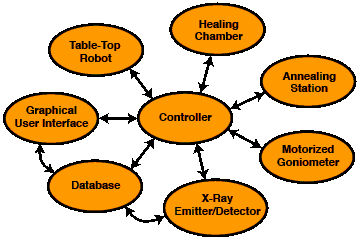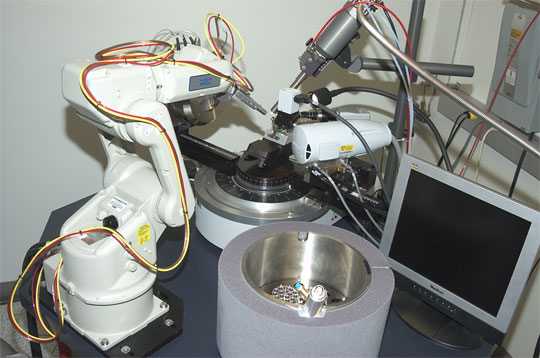Automated Annealing and Healing of Protein Crystals
Project Summary
Protein crystals are usually cooled to liquid nitrogen temperatures for X-ray diffraction to minimize damage from the ionizing radiation. Such cooling often produces lattice disorder. This disorder can sometimes be reduced by "annealing" the crystal, i.e., by cycling the frozen crystal between temperatures on either side of a phase state transition that occurs at roughly 233° K (-40° F). There is also evidence to suggest that this damage can sometimes be reduced by "healing" the crystal, i.e., by thawing the crystal completely and allowing it to equilibrate in a humidity-controlled chamber, then refreezing it. As part of the Structural Genomics of Pathogenic Protozoa (SGPP) project at the University of Washington, we are developing a system for automated annealing and healing of protein crystals. This system will include, as components, an X-ray diffractometer with a motorized goniometer, a liquid nitrogen delivery system, a dewar with an automated system for controlling its liquid nitrogen level, a table top robot, a healing chamber, and an annealing station, all operating in response to commands issued by a central controller component. The central controller component will, in turn, operate in response to supervisory commands issued by a human operator via a graphical user interface.
In its present state, the system includes the X-ray diffractometer with motorized goniometer, liquid nitrogen delivery system, dewar with an automated system for controlling its liquid nitrogen level, table top robot, healing chamber components, central controller, and graphical user interface components.
The greatest challenges are the development of the necessary communications between the different devices and the development of the logic to be implemented by the central controller to guarantee efficient and problem-free operation of the complete system.

